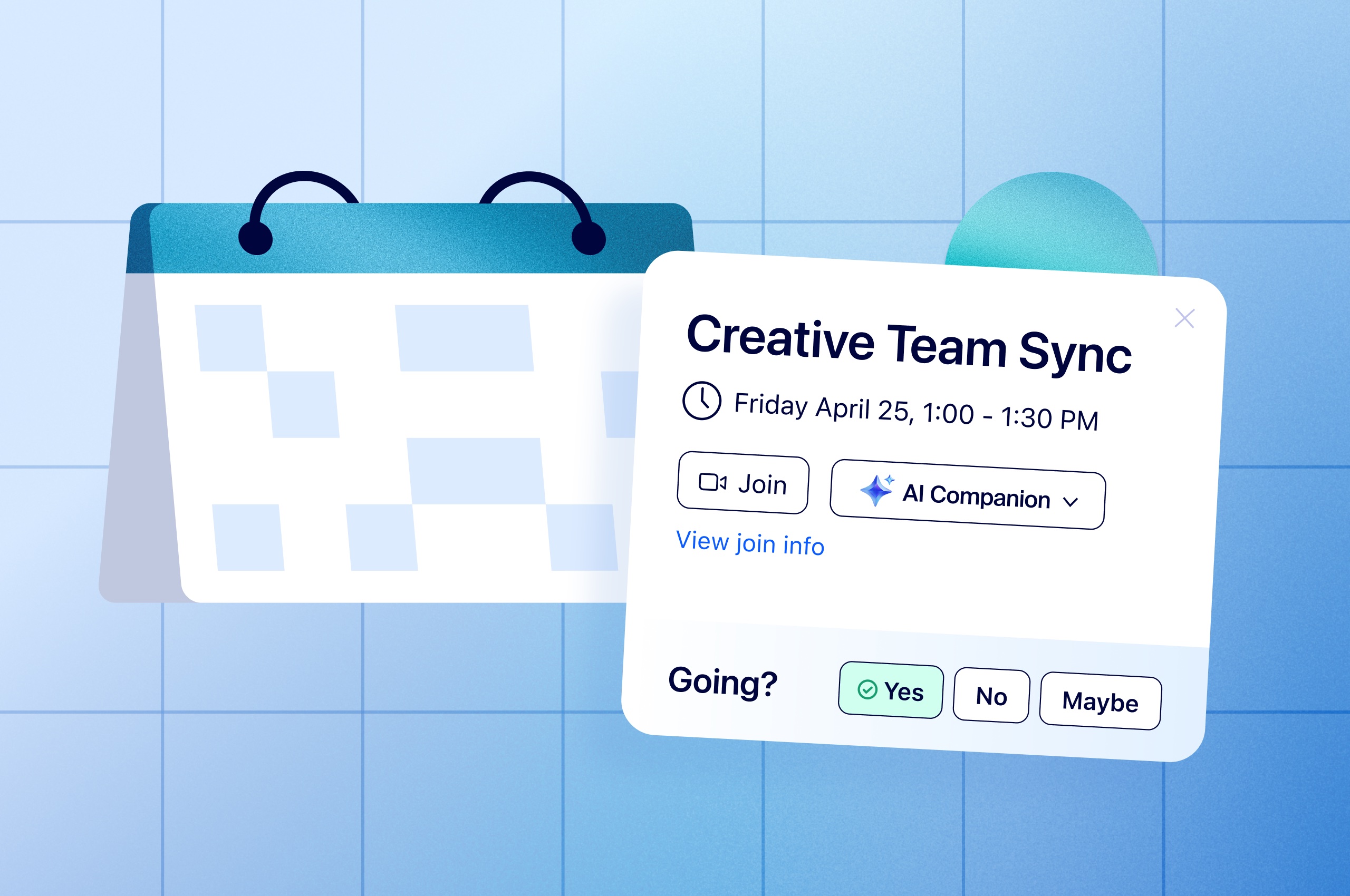
How to fix your broken meetings: Master the meeting lifecycle [infographic]
If you want to improve collaboration, look across the entire meeting lifecycle — time spent before, during, and after meetings — to set your team up for success.
Updated on September 01, 2022
Published on May 29, 2018


Warning: This is not just another article on effective communication in the workplace. Those articles can be real snooze fests. This article is totally different. We’ve brought together research, trends and personal experience to bring you the absolute best roundup of effective communication strategies. These strategies are not only unique, but can also be implemented at your company today. Let’s dive in!
 Source: Harvard Business Review
According to the above study, the easiest ways for the company’s leadership to improve communication are to recognize employee achievements, give clear directions, make time for meeting with your employees, and create open environments to talk with subordinates.
Source: Harvard Business Review
According to the above study, the easiest ways for the company’s leadership to improve communication are to recognize employee achievements, give clear directions, make time for meeting with your employees, and create open environments to talk with subordinates.
Remember how the study by HBR said the second most common communication issue is not giving clear instructions? Well, if you’re simply “telling” your employees what to do without giving them any kind of guidance, that’s a BIG problem. Luckily, employee engagement tools can help with that... But you want to avoid using too many tools. Multiple channels can get confusing fast. That’s why I’m only suggesting three tools, each with a very specific purpose:
The first tool—Monday—makes it easy to manage your projects across teams without anything slipping through the cracks.  It’s intuitive and lets you see what everyone’s working on in a single glance, but what I really love is how it provides a totally seamless communication experience. Monday allows you to connect with your team from anywhere in the world and add tasks to a drag-and-drop spreadsheet, which saves time by eliminating email and phone calls. For a quick run-through of all of its features, check out this video. While you can communicate directly on Monday’s platform for individual tasks, I also like to have a sort of “chat room” for employees to interact. That’s where chat software comes in. If you haven’t already heard, Slack is a fantastic cloud-based collaboration tool that easily keeps everyone on your team in the loop. Of course, once you’re a Slackophile (yes, I made that up), there are all kinds of shortcuts that will further boost your productivity and save time. Check out these Slack tips by Noah Kagan from Sumo. Zoom also has a cross-platform chat that is worth checking out if you want to go from three tools to two. Additionally, Zoom’s video integrates with Slack, so you can have a seamless chat to meeting experience using both tools. Now you’ve got a way to effortlessly communicate tasks and projects online (thanks Monday!) and your entire team is talking with one another via chat (well, hello there Slack). The only thing you really need now is a way to communicate visually. Enter Zoom. Having employees or team members in different countries makes it just about impossible to gather everyone in the boardroom for a quick update on your new project. Heck, even having everyone meet from different departments in the same building can be difficult.
It’s intuitive and lets you see what everyone’s working on in a single glance, but what I really love is how it provides a totally seamless communication experience. Monday allows you to connect with your team from anywhere in the world and add tasks to a drag-and-drop spreadsheet, which saves time by eliminating email and phone calls. For a quick run-through of all of its features, check out this video. While you can communicate directly on Monday’s platform for individual tasks, I also like to have a sort of “chat room” for employees to interact. That’s where chat software comes in. If you haven’t already heard, Slack is a fantastic cloud-based collaboration tool that easily keeps everyone on your team in the loop. Of course, once you’re a Slackophile (yes, I made that up), there are all kinds of shortcuts that will further boost your productivity and save time. Check out these Slack tips by Noah Kagan from Sumo. Zoom also has a cross-platform chat that is worth checking out if you want to go from three tools to two. Additionally, Zoom’s video integrates with Slack, so you can have a seamless chat to meeting experience using both tools. Now you’ve got a way to effortlessly communicate tasks and projects online (thanks Monday!) and your entire team is talking with one another via chat (well, hello there Slack). The only thing you really need now is a way to communicate visually. Enter Zoom. Having employees or team members in different countries makes it just about impossible to gather everyone in the boardroom for a quick update on your new project. Heck, even having everyone meet from different departments in the same building can be difficult.  Zoom is a powerful software that allows employees to connect via video conference. Organize an online meeting, provide online training to staff, create a Zoom conference room for collaborative projects, or set up a live virtual event where participants can connect with the speakers. Video is far superior to audio as a way to connect with co-workers, and it offers a better avenue for communication. One last bonus tip—I like to use Calendly to schedule meetings across various time zones. That way you can avoid the back and forth of trying to find the right time. The truth is that there’s no shortage of awesome tools you can use to boost company communications. But these three tools are cream of the crop!
Zoom is a powerful software that allows employees to connect via video conference. Organize an online meeting, provide online training to staff, create a Zoom conference room for collaborative projects, or set up a live virtual event where participants can connect with the speakers. Video is far superior to audio as a way to connect with co-workers, and it offers a better avenue for communication. One last bonus tip—I like to use Calendly to schedule meetings across various time zones. That way you can avoid the back and forth of trying to find the right time. The truth is that there’s no shortage of awesome tools you can use to boost company communications. But these three tools are cream of the crop!
 The easiest way to do this is to set up recurring meetings to discuss an employee’s (and manager’s) work. The best way to do that is to go beyond written communication and set up an in-person meeting or a video meeting with Zoom.
First, ask your employee about what she did well and have her provide as much detail as possible. You should also provide positive feedback on what she did well. Then, ask her what she might do differently next time. You should also suggest, in a positive way, what she might do differently. There are multiple advantages to this approach: you tell your employee what you did and didn’t like, while also helping her build confidence and set goals. Score!
Plus, research suggests that the majority of workers prefer constructive comments rather than praise or recognition. And, more specifically, research shows that novices prefer positive feedback while experts relish the negative.
Giving productive feedback to colleagues is an art form, and when executed respectfully, it can strengthen relationships and improve the working environment.
The easiest way to do this is to set up recurring meetings to discuss an employee’s (and manager’s) work. The best way to do that is to go beyond written communication and set up an in-person meeting or a video meeting with Zoom.
First, ask your employee about what she did well and have her provide as much detail as possible. You should also provide positive feedback on what she did well. Then, ask her what she might do differently next time. You should also suggest, in a positive way, what she might do differently. There are multiple advantages to this approach: you tell your employee what you did and didn’t like, while also helping her build confidence and set goals. Score!
Plus, research suggests that the majority of workers prefer constructive comments rather than praise or recognition. And, more specifically, research shows that novices prefer positive feedback while experts relish the negative.
Giving productive feedback to colleagues is an art form, and when executed respectfully, it can strengthen relationships and improve the working environment.
I have been working in my pajamas from home since 2014, and it’s true what they say: once you go virtual, you don’t go back. But despite not being in an office, I still want to see my colleagues’ smiling faces and connect with them frequently. And video conferences are the best way to do that. Organizing a quick call with a very specific agenda and keeping it short (say, 10-15 minutes), so everyone can check in, has a lot of advantages. Touching base in this way helps team members stay connected, reinforces objectives, keeps communication channels open, and makes sure everyone is in the loop.  What’s the best way to organize these regular rendezvous? With Zoom, of course! Getting the team together by video conference is much better than making an audio conference call. Video reduces distractions and keeps everyone focused. You’d be surprised to learn what people are really doing when they’re on a traditional audio-only call! Ask open-ended questions as much as possible:
What’s the best way to organize these regular rendezvous? With Zoom, of course! Getting the team together by video conference is much better than making an audio conference call. Video reduces distractions and keeps everyone focused. You’d be surprised to learn what people are really doing when they’re on a traditional audio-only call! Ask open-ended questions as much as possible:
I suggest having short and focused daily checkings (those 10-15 minute calls) if you can, plus a slightly longer (say, 30 minute) call once a week to dive into the more open-ended questions.
 This strategy is also effective on a smaller scale. Organize a fun weekly activity, like a pizza and movie night or card games. These types of informal settings allow employees from different departments to relax, chit chat, and get to know one another. Also, consider holding team building events during work hours, as some people have fixed schedules and can’t stay late. Even something as simple as a weekly company lunch with a “rule” that each table must seat people from at least three different divisions.
But what if some, or even all, of your team is virtual? Not to worry!
There are plenty of virtual team-building activities that can help create proximity between team members, no matter where in the world they are. For example, team members can connect by video conference and share and talk about two photos of themselves, their families, pets, etc. This allows everyone in the group to learn a little more about their colleagues.
This strategy is also effective on a smaller scale. Organize a fun weekly activity, like a pizza and movie night or card games. These types of informal settings allow employees from different departments to relax, chit chat, and get to know one another. Also, consider holding team building events during work hours, as some people have fixed schedules and can’t stay late. Even something as simple as a weekly company lunch with a “rule” that each table must seat people from at least three different divisions.
But what if some, or even all, of your team is virtual? Not to worry!
There are plenty of virtual team-building activities that can help create proximity between team members, no matter where in the world they are. For example, team members can connect by video conference and share and talk about two photos of themselves, their families, pets, etc. This allows everyone in the group to learn a little more about their colleagues.
Hopefully, you’ve learned how to create skilled communicators out of your employees (and yourself). That’s the goal! But you’ll have to figure out which methods your specific employees and colleagues will be most receptive to, and that may vary between departments. The engineers may respond differently from the human resource team, while the graphic designers might be even more different. As with any business project, it’s important to assess the effectiveness of your communications strategies. Ask yourself:
It’s vital to make internal communication measurable so you can see what works, what doesn’t, and tweak it accordingly. Only then can you sit back and watch your strategy work its magic. About the Author: Bill Widmer is a B2B content marketing and SEO consultant. He loves creating world-class content that ranks #1. He’s worked with Shopify, Sumo, Content Marketing Institute, and more. 